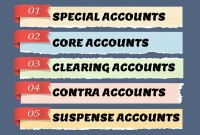- Home
- Business Processes
- Industry Knowledge
- Aerospace Industry
- Automotive Industry
- Banking Domain
- BFSI Industry
- Consumer/ FMCG Industry
- Chemicals Industry
- Engineering & Construction
- Energy Industry
- Education Domain
- Finance Domain
- Hospitality Domain
- Healthcare Industry
- Insurance Domain
- Retail Industry
- Travel and Tourism Domain
- Telecom Industry
- Leadership Skills
- eLearning
- Home
- Functional
- General Ledger (Record to Report)
- Company Form
Company Form
A Company (also called corporation) may be understood as an association of persons in which money is contributed by them, to carry on some business or undertaking. Persons who contribute the money are called the shareholders or the members of the company. A corporation is an artificial being, invisible, intangible and existing only in contemplation of law. Being the mere creature of law, it possesses only those properties which the charter of its creation confers upon it.
Definition of Company/Corporation
A Company (also called corporation) may be understood as an association of persons in which money is contributed by them, to carry on some business or undertaking. Persons who contribute the money are called the shareholders or the members of the company. A corporation is an artificial being, invisible, intangible and existing only in contemplation of law. Being the mere creature of law, it possesses only those properties which the charter of its creation confers upon it, either expressly or an incidental to its very existence. It is an association of many persons, who contribute money or money's worth to a common stock and employ it for a common purpose. The common stock so contributed is denoted in money and is the capital of the company. The persons who contribute it or to whom it belongs are members. The proportion of capital to which each member is entitled is his share.
Main Features
- Once incorporated, a company assumes the identity of an artificial person
- An incorporated company is a corporate body and by action of law it is treated as a legal person
- The company may sue or be sued by its members/shareholders
- The company can enter into contracts in its own name and likewise may sue and be sued in its own name
- The company is a separate legal entity distinct from its management and shareholders
- Company affairs are managed by a Board of Directors
- A company has perpetual existence and is not effected by the joining, leaving, death, insolvency or insanity of any of its shareholders
- The shares of a Joint Stock company (except private company) are freely transferable
- A private company through its articles may place certain restrictions on the transferability of its shares
- In case of a company limited by share, the liability of the members of the company is limited to the nominal value of
- shares held by them
- Capital for the company is contributed by a number of persons called shareholders
- Large number of shareholder give ability to company to raise large amount of capital
- Shareholder is not the agent of the company or its shareholders and hence he cannot bind company with his acts
- The scope of the business of a company is limited and restricted to what is mentioned in the 'object clause' of its Memorandum of Association. The company cannot take up any new business without changing the object clause.
To summarize shareholders are the real owners of the company, Their liability is limited. They can also transfer their shares to others. Since the shareholders are very large in number, the company cannot be managed by all. They elect a board of directors to manage the company. The destiny of the company is guided and directed by the directors. These directors employ some people to carry on the day-to-day business of the company.
Different types of companies
Statutory Company: A company established by a special Act of the Parliament or State Legislature is called 'Statutory Company'. Such companies are established in special cases when it is necessary to regulate the working of the company for some specific purposes. Examples of such corporations are Central Banks etc.
Chartered Company: A company which is incorporated under a special Royal Charter granted by the Monarch is called a 'Chartered Company'. It is regulated by the provisions of that charter. Examples are: British East India Company, Bank of England, Hudson's Bay Company, etc.
Unlimited Company: A company in which the liability of the members is unlimited, is called 'Unlimited Company'. At the time of winding up of the company shareholders have to pay, if necessary, from their personal assets to clear the company's debts. Such companies are very rare.
Companies Limited by Guarantee: In the case of some companies, members give guarantee for the debts of the company up to a certain limit in addition to the amount of shares held by them. The additional amount guaranteed by the members is, generally, laid down in the Memorandum of Association. Such companies are not formed for the purpose of profit. They are formed to promote art, culture, religion. trade, sports, etc. Clubs, Charitable organizations, trade association, etc. come under this category.
Companies Limited by Shares: In this case the liability of the members is limited to the amount of the shares held by them. A shareholder can be called upon to pay only the unpaid amount of shares held by him and nothing more. Most of the companies come under this category.
Private Limited Company: A private limited company means a company which by its article restricts the right to transfer its shares; limits the number of its members; and prohibits any invitation to the public to subscribe for any shares or debentures of the company.
Public Limited Company: A public limited company is one which is not a private limited company. The right of the shareholder to transfer his shares is not restricted and it can invite public to subscribe for its shares and debentures.
Government Company: A company in which not less than 5 1 per cent of the paid up share capital is held by the Central Government, or by any State Government or jointly by Central and/or State Governments.
National Company: When the operations of a company are confined within the boundaries of the country in which it is registered, such a company is called a national company.
Multinational Company: When the operations of a company are extended beyond the boundaries of the country in which it is registered, such a company is called a multinational company. It is also called 'transnational company'.
Foreign Company: Foreign Company refers to a company that operates in the foreign country outside the country of its registration.
Holding and Subsidiary Company: A subsidiary is a company that is completely or partly owned by another company known as holding company.
Related Links
You May Also Like
-
What Is a General Ledger? General Ledger (also known in accounting as the GL or the Nominal Ledger) is at the heart of any accounting system. A general ledger is the master set of accounts that summarize all transactions occurring within an entity. Ledger is the skillful grouping and presentation of the Journal entries. Learn the accounting fundamentals, general ledger process, and general ledger flow.
-
Accrued expenses, sometimes referred to as accrued liabilities, are expenses that have been incurred but have not been recorded in the accounts. Discuss the need to record accrued liabilities and why they require an adjustment entry. Understand the treatment for these entries once the accounting period is closed and learn to differentiate when the commitments become liabilities.
-
GL - Accrued / Unbilled Revenue
Accrued revenues (also called accrued assets) are revenues already earned but not yet paid by the customer or posted to the general ledger. Understand what we mean by the terms accrued revenue, accrued assets, and unbilled revenue. Explore the business conditions that require recognition of accrued revenue in the books of accounts and some industries where this practice is prevalent.
-
Global Business Services (GBS) Model
Global business services (GBS) is an integrated, scalable, and mature version of the shared services model. Global Business Services Model is a result of shared services maturing and evolving on a global scale. It is represented by the growth and maturity of the Shared services to better service the global corporations they support.
-
Business Metrics for Management Reporting
Business metric is a quantifiable measure of an organization's behavior, activities, and performance used to access the status of the targeted business process. Traditionally many metrics were finance based, inwardly focusing on the performance of the organization. Businesses can use various metrics available to monitor, evaluate, and improve their performance across any of the focus areas like sales, sourcing, IT or operations.
-
There are five types of core accounts to capture any accounting transaction. Apart from these fundamental accounts, some other special-purpose accounts are used to ensure the integrity of financial transactions. Some examples of such accounts are clearing accounts, suspense accounts, contra accounts, and intercompany accounts. Understand the importance and usage of these accounts.
-
Matrix Organizational Structures
In recent times the two types of organization structures which have evolved are the matrix organization and the network organization. Rigid departmentalization is being complemented by the use of teams that cross over traditional departmental lines.
-
In some of the ERP tools, there are more than 12 accounting periods in a financial year. This article discusses the concept of accounting calendar and accounting periods. Learn why different companies have different accounting periods. Understand some of the commonly used periods across different organizations and the definition & use of an adjustment period.
-
GL - Understanding Chart of Accounts
A chart of accounts (COA) is a list of the accounts used by a business entity to record and categorize financial transactions. COA has transitioned from the legacy accounts, capturing just the natural account, to modern-day multidimensional COA structures capturing all accounting dimensions pertaining to underlying data enabling a granular level of reporting. Learn more about the role of COA in modern accounting systems.
-
In this article, we will describe how to determine if an account needs adjustment entries due to the application of the matching concept. Learners will get a thorough understanding of the adjustment process and the nature of the adjustment entries. We will discuss the four types of adjustments resulting from unearned revenue, prepaid expenses, accrued expenses, and accrued revenue.
Explore Our Free Training Articles or
Sign Up to Start With Our eLearning Courses

About Us
Learning
© 2023 TechnoFunc, All Rights Reserved









